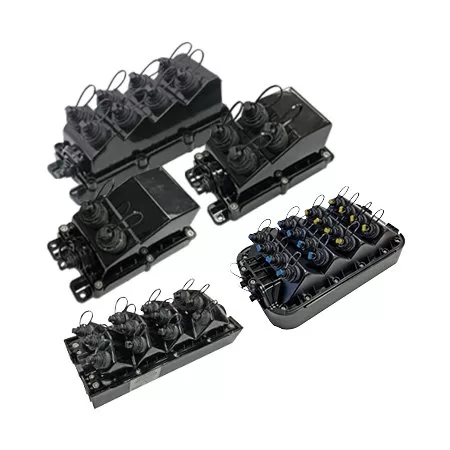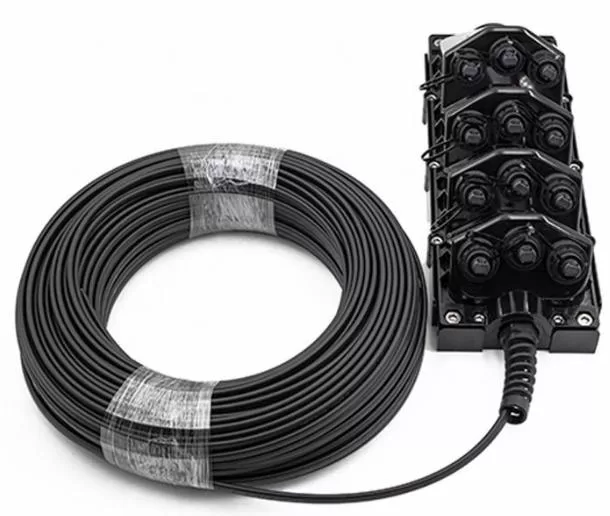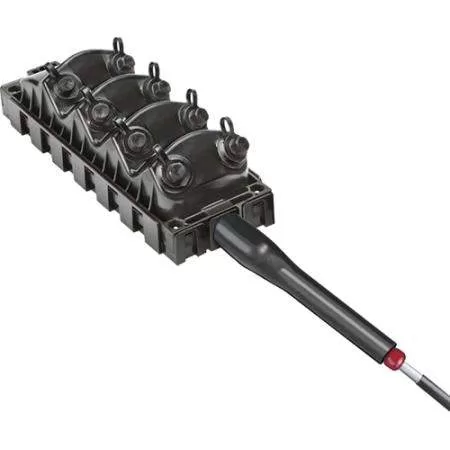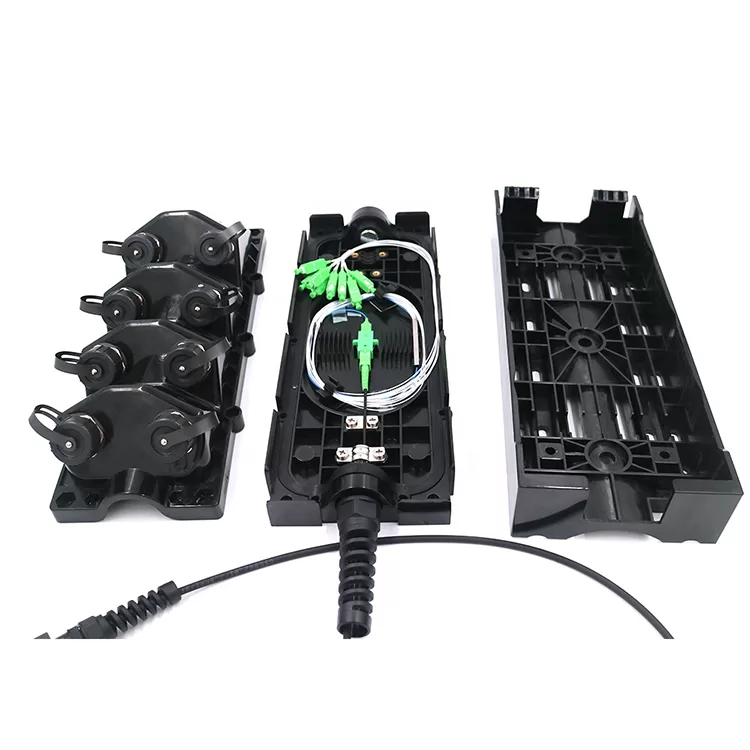A Multiport Service Terminal (MST) is an indispensable component in fiber optic networks. It functions as a central hub for multiple fiber optic cables, enabling efficient distribution, management, and protection of the delicate fibers within. This guide delves into MSTs, exploring their types, applications, benefits, key considerations for deployment in 2025.
Types of Multiport Service Terminals
MSTs come in various configurations to cater to diverse network needs. Here’s a breakdown of common types:
Wall-mount MSTs

- Ideal for space-constrained environments like telecom rooms or enterprise buildings.
- Compact design for wall mounting.
- Lower cable termination capacity compared to rack-mount MSTs.
Rack-mount MSTs

- Designed for high-density applications within standard equipment racks.
- Larger capacity for cable terminations, accommodating extensive network deployments.
- Well-suited for data centers and central offices.
Underground MSTs

- Built for harsh outdoor environments, placed below ground.
- Provide access points for buried fiber optic cables.
- Rugged construction for weather resistance and durability.
Aerial MSTs

- Employed in aerial fiber deployments, typically attached to poles or overhead structures.
- Constructed for weather resistance and secure attachment points.
- Suitable for overhead fiber optic cable routes.
MST Type Comparison
| Feature | Wall-mount MST | Rack-mount MST | Underground MST | Aerial MST |
|---|---|---|---|---|
| Typical Location | Telecom rooms, Enterprise buildings | Data centers, Central offices | Underground vaults, Conduits | Overhead poles, Towers |
| Space Requirement | Low | High | Medium | Medium |
| Cable Capacity | Lower | Higher | Medium | Medium |
Applications of Multiport Service Terminals
MSTs play a vital role in various fiber optic network applications:
- Fiber Optic Distribution: They act as connection points for feeder cables from the main network and distribution cables carrying signals to individual users or locations.
- Enterprise Networks: MSTs are deployed in enterprise buildings to distribute fiber optic cables for data centers, voice communication systems, and security applications.
- FTTH (Fiber-to-the-Home): In FTTH deployments, MSTs are used to terminate fiber optic cables at neighborhoods or individual buildings, facilitating high-speed internet delivery to homes.
- Data Center Connectivity: MSTs are crucial for managing and distributing fiber optic cables within data centers, enabling high-bandwidth connections between servers and storage devices.
Benefits of Using Multiport Service Terminals
There are several advantages to incorporating MSTs into your fiber optic network:
- Scalability: MSTs can accommodate a high volume of fiber optic cable terminations, allowing your network to grow efficiently as your needs evolve.
- Organization: They provide a centralized location for managing and organizing fiber optic cables, simplifying network maintenance and troubleshooting.
- Protection: MSTs safeguard fiber optic cables from physical damage, dust, and other environmental hazards.
- Easy Maintenance: The modular design of MSTs facilitates easy access to individual cables for maintenance or reconfiguration.
- Security: Locking mechanisms on MSTs can be implemented to restrict unauthorized access to fiber optic terminations.
Considerations for Deploying MSTs in 2025
Here are some key factors to consider when deploying MSTs in 2025:
- Fiber Density: With increasing fiber counts in cables (e.g., higher core counts), ensure the MST has sufficient port capacity to accommodate your current and future needs. Consider using MTP connectors, which can handle higher fiber counts in a single connector, reducing the required number of ports.
- Scalability Requirements: Choose an MST that can be easily expanded upon as your network grows. Modular designs with removable cassettes allow for flexible capacity increase.
- Space Constraints: Select a wall-mount option for space-limited environments or a rack-mount MST for high-density applications. Underground or aerial MSTs are suitable for outdoor deployments.
- Ease of Use: Prioritize user-friendly MSTs with clear labeling, color-coded ports, and accessible cable management features.
- Compliance Standards: Ensure the MST adheres to relevant industry standards like IEC 61754 for performance and safety.
Conclusion
Multiport Service Terminals (MSTs) use special, super strong connectors built to handle harsh outdoor conditions. These uniquely designed hardened connectors are factory-terminated and environmentally sealed for use in optical drop cable deployments. The MST series comes in many different styles, connector types, and mounting options, so you can find one that works for almost any network.
FiberCheap is a professional Multiport Service Terminal (MST) Manufacturer with 15 years of experience, if you’re looking for a Multiport Service Terminal (MST) solution that offers superior quality, durability and cost-effectiveness, please feel free to contact us to get whole MST brochure from the right form. We will be at your service any time.
